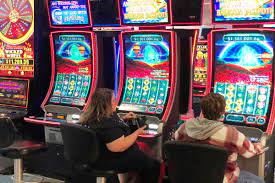Buffet and lounge areas in casinos are high-traffic zones where guests enjoy dining and socializing while participating in gaming and entertainment activities. These areas, however, are also prone to incidents of unpaid meals, commonly referred to as “eat and run” cases. To prevent losses and maintain a safe and orderly environment, specialized Eat and Run Police (먹튀폴리스) units play a vital role in monitoring these spaces, employing a combination of surveillance, behavioral observation, and collaboration with casino staff.
Surveillance and Monitoring
A primary responsibility of eat and run police is the constant monitoring of buffet and lounge areas. Casinos utilize high-definition cameras strategically placed to cover entrances, exits, dining tables, and food service stations. Police officers review live feeds and recorded footage to detect suspicious activity, such as individuals attempting to leave without paying or avoiding interactions with staff.
Continuous surveillance allows for immediate intervention when an incident occurs. Officers can track a suspect’s movements, gather evidence, and coordinate with security personnel to prevent the offender from leaving the premises unnoticed. This proactive monitoring is essential for reducing the frequency of unpaid meal incidents.
Staff Coordination and Reporting
Casino staff, including servers, hosts, and managers, are critical partners in identifying potential eat and run offenders. Eat and run police work closely with staff members to ensure suspicious behavior is reported promptly. Staff are trained to notice indicators such as patrons leaving trays unattended, rushing toward exits, or avoiding the cashier area.
Police rely on detailed reports from staff, which include descriptions of the suspect, clothing, and any distinguishing features. Combining these observations with surveillance footage enables officers to identify offenders more accurately and take swift action. Staff cooperation ensures that incidents are addressed efficiently without disrupting the dining experience for other guests.
Behavioral Analysis and Profiling
Eat and run police utilize behavioral analysis to identify potential offenders before an incident occurs. Observing patrons’ actions, body language, and interactions with staff can reveal suspicious intent. For example, individuals who frequently glance around, avoid eye contact, or make sudden movements may warrant closer attention.
Profiling also includes recognizing patterns from previous incidents. Casinos maintain records of repeat offenders, and police can use this information to monitor high-risk individuals proactively. By combining real-time observation with historical data, officers can prevent incidents before they escalate.
Technological Tools and Data Integration
Modern technology enhances the ability of eat and run police to monitor buffet and lounge areas effectively. Point-of-sale systems, facial recognition software, and license plate databases allow officers to link incidents to specific patrons and transactions. Integrating technology with surveillance footage and staff reports creates a comprehensive system for identifying offenders.
Data analysis also helps in resource allocation. Monitoring peak hours, high-traffic areas, and trends in unpaid meal incidents enables officers to deploy strategically, increasing the likelihood of preventing theft while minimizing disruption to guests.
Post-Incident Procedures
When an offender is identified, eat and run police follow established protocols to address the situation. This may include questioning the individual, issuing citations, or coordinating with casino management to recover unpaid amounts. Thorough documentation of the incident, including surveillance evidence and staff reports, is essential for any subsequent legal or administrative action.
Collaboration with Casino Management
The effectiveness of eat and run police relies heavily on collaboration with casino management. Regular communication, joint training sessions, and adherence to established protocols ensure that incidents are handled efficiently and consistently. Management’s support in providing technology, staff training, and policy enforcement reinforces the ability of officers to maintain order in buffet and lounge areas.
Conclusion
Eat and run police play a crucial role in monitoring buffet and lounge areas in casinos, combining surveillance, behavioral analysis, staff coordination, and technology to prevent incidents of unpaid meals. Their presence protects casino revenue, ensures a safe and orderly environment, and reinforces the integrity of dining and entertainment services. By implementing these strategies, casinos can maintain a positive experience for all patrons while minimizing the risk of theft and fraud.


